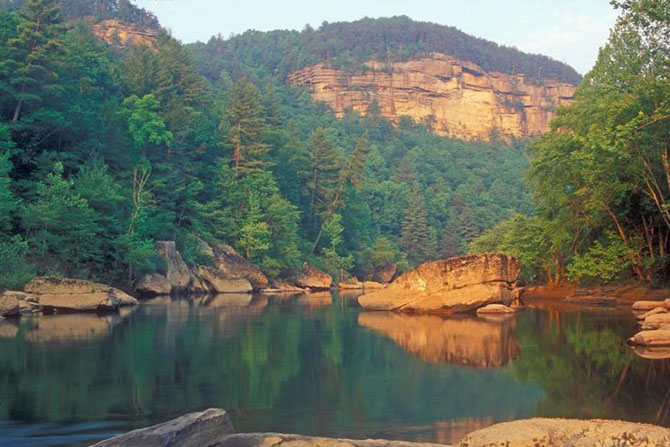WASHINGTON — A new government rule that promises to do more to protect streams near coal mining operations entered a critical stage this week, with coal industry lobbyists and environmentalists already lining up for battle.
A 60-day comment period opened Monday. After that, the Interior Department will review the public’s input, decide whether to amend the rule and then issue a final rule. There is no set timeline for the process, but Daniel Rice, an analyst at the Office of Surface Mining Reclamation and Enforcement, the agency that regulates mining, said he anticipated it would get done while President Barack Obama is still in office.
The National Mining Association, a coal industry group, has said it will challenge the rule in court if it is finalized as currently written. On the other side, environmental groups don’t think the rule goes far enough in protecting sensitive habitats.
The proposed rule would impose new requirements for mining companies to follow in order to minimize environmental damage. It would add 10 new contaminants to a data list that mining companies must collect before extracting coal. Currently, companies must test levels of four contaminants in groundwater and five in surface water.
One of the newly listed contaminants, the element selenium, has been found to cause deformities in fish. Cleaning up selenium entails an expensive process called reverse osmosis, according to Rice.
In some water downstream of coal mines, researchers have found that pollutant-tolerant species are replacing native species.
The proposed rule also addresses a point of confusion from a 1977 law called the Surface Mining Control and Reclamation Act. That law created two standards for environmental protection near mining sites – one inside the permit area and the other for the area surrounding the permit boundaries.
“Inside the permit area, the standard is to minimize damage to the hydrologic balance,” Rice said in an interview. “Outside the permit area, the standard is to prevent material damage to the hydrologic balance.”
But the law never defines what amounts to “material damage to the hydrologic balance.” The proposed stream protection rule would define the phrase.
The lack of clarity in the law matters to Don Barger, southeast regional director at the National Parks Conservation Association.
“There’s numbers of places where the park is essentially a canyon or a gorge, which means that the headwaters – the water that feeds the water you’re trying to protect in the park – come from outside the park,” Barger said. Some parks, like the Big South Fork Natural River and Recreation Area on the Kentucky-Tennessee border, are located downstream of coal mines.
“And so can you really protect endangered species in a stream in the Big South Fork, if complete parts of its headwaters are being destroyed?” Barger asked. “You know, because everyone knows the plumber’s first rule: Everything flows downhill.”
A draft of the Interior Department’s regulatory impact analysis of the proposed stream protection rule projects minimal impact on coal production.
If fully implemented, the rule would lead to a 0.1 percent increase in the annual cost of electricity production in the United States, on average, and a 0.18 percent decrease in coal production, the department says.
The rule would cost an average of $52 million per year to implement, or roughly 0.1 percent of the coal revenue from 2013, according to the regulatory analysis. It would cut an estimated 260 jobs per year in coal country, which is already under duress. However, the regulatory impact analysis predicts the rule would add between 210 and 270 jobs on the compliance end of the coal industry, if fully carried out.
Coal industry groups, such as the National Mining Association, plan to challenge the rule, which would be overseen by the Office of Surface Mining Reclamation and Enforcement, known as the OSM.
“OSM sees an opportunity to expand its legal authority that it doesn’t have,” said Luke Popovich, vice president of external communications for the National Mining Association. “It’s trying to stretch SMCRA (the 1977 law) to imply that OSM . . . has authority over water quality and over the state management of their programs. And we say it does not.”
Popovich, in a phone interview, said he expected his organization to file a lawsuit challenging the rule unless it is amended after the comment period. The group has also filed a request to extend the comments to 180 days.
“It took them six years to develop this rule and they’re only giving 60 days for stakeholders to come in on a draft (environmental impact statement) that’s 1,200-plus pages and a rule that’s over 1,200 pages,” Popovich said. “I mean, that’s absurd.”
The Office of Surface Mining Reclamation and Enforcement plans public comment sessions in Charleston, W.Va.; Lexington, Ky.; Pittsburgh, St. Louis and Denver.
Comments can be filed online at http://www.regulations.gov. Once the comment period is over, the Interior Department will review the comments and decide which, if any, to incorporate into a final rule, which will be made public 30 days before it becomes finalized.







